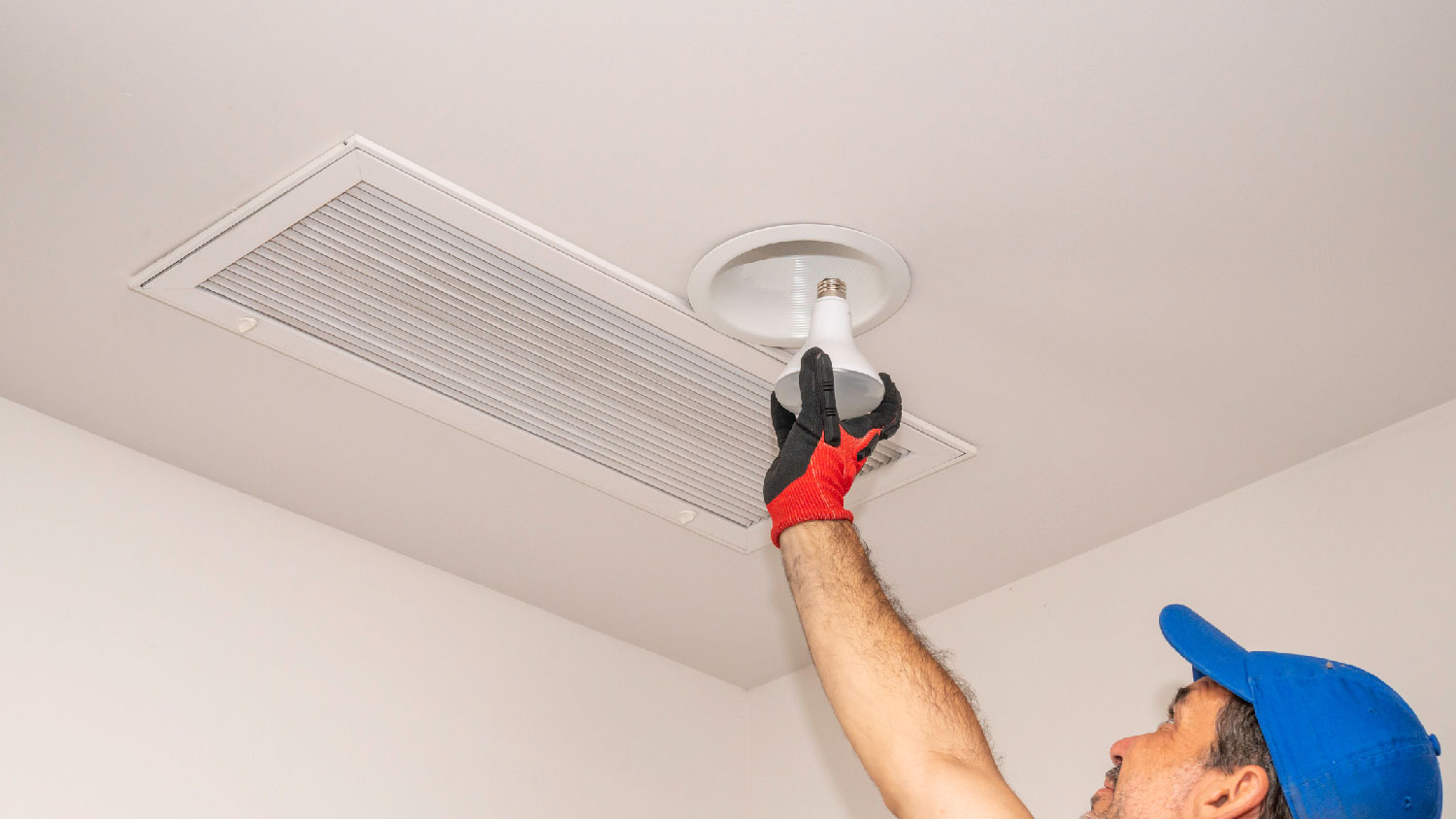
Get transparent light fixture repair cost info. Learn what impacts price, compare repair vs. replacement, and find ways to save.
Illuminate your home the way you like


Can lights have a metal can-shaped housing that holds the light source.
Canless lights have an all-in-one unit that includes the housing, light source, and trim.
The best option for your home depends on the cost, decorative style, and type of installation you need.
If you’re looking to illuminate your home in a modern way, recessed lighting is the way to go. There are two types of recessed fixtures you can choose from: can and canless. Both fixtures feature different benefits when it comes to their installation process, design options, energy efficiency, and cost. Use this guide to discover the best recessed light fixture for your home.

Can lights get their name from their cylindrical or can-shaped metal housing. This housing is placed in a hollow opening in the ceiling and holds the lightbulb. It’s hidden in the ceiling—only the trim shows on the surface of the ceiling.
Can lights allow you to use any type of light bulb since the electrical connections are within the housing. You can choose from incandescent, fluorescent, LED, or halogen bulbs to use with your can light. The type of bulb you select has a direct impact on your energy use, so an LED is often recommended if you’re looking to save on energy costs.
Can lights are a great choice for a variety of reasons.
They have a clean, modern look since they’re hidden within the ceiling
With a size range of three to six inches, they are a great option for homes with low ceilings
They feature a wider range of decorative options than canless lights
They are protected against rodents and other damage due to their recessed housing design. The housing prevents pests from chewing on the wires as it covers the electrical components.
You can choose any type of light bulb, such as budget-friendly fluorescent bulbs or energy-saving LEDs
Can lights come with one major setback, due to the installation directly into the ceiling. To put in a can light, you’ll need to make electrical connections and carve out an opening in the ceiling. This makes them a more difficult option for homes that are already built.

The main difference between canless lights and can lights is that they don’t feature metal housing. They’re installed directly into the ceiling and have self-contained units. These units are a single fixture with trim, housing, and a light source. All canless lights come with built-in LED bulbs.
Canless lights come with their fair share of benefits.
These lights are more energy-efficient than can lights due to their LED bulbs, which consume 80% less energy than standard bulbs. This can reduce your energy costs.
LED bulbs have a longer lifespan than traditional bulbs and produce a high level of brightness.
The design of canless lights allows for easier installation as they don’t require large holes to be cut into the ceiling.
With their all-in-one design, they can be easily connected to your home’s ceiling electrical box through a single hole punched into the plasterboard.
The design of canless lights offers some limitations, as well. Since they include everything in the fixture, you’re not able to choose the bulb that’s used. This may not be ideal for those looking for a certain type of lighting, such as warm incandescent bulbs or cost-effective fluorescent bulbs.
Canless lights also often have a higher replacement cost. When they stop working, the entire fixture needs to be replaced, rather than just the bulb. This can be timely and costly.

Choosing the type of recessed lighting that’s best for your home depends on your personal preferences, including design options, installation time, and cost. The design, brand, and features of the light you choose will impact the final price.
Can lights are a much more versatile choice than canless lights. They are crafted in a variety of different shapes, sizes, and designs. You can also customize them with decorative trims or directional lighting. Trim options include:
Baffle trim
Eyeball trim
Pinhole trim
Having the freedom to choose different styles allows you to better tailor the aesthetic of the space.
Canless lights are often much more simple in design and feature less customizable attributes. They are better suited for uniform or specific needs, such as under-cabinet lighting.
If you’re looking for a quick and easy installation, canless lights are the way to go. As they are directly mounted in the ceiling and require limited space, they’re much easier to install than can lights.
Can lights require you to install a housing unit above the ceiling, which is a longer process.
Canless recessed lights are more cost-effective than can lights. Their average price ranges from $40 to $160. Can lights run from $60 to $240. Canless lights also include an LED bulb, which will reduce your overall energy costs.
The cost of installation will depend on the fixture you choose. Electricians typically charge between $85 to $105 per hour, and the complexity of the job will determine the time it takes to install your fixture.
Can and canless designs both come with their fair share of benefits and are best suited for different types of spaces. If you’re feeling unsure about which to choose or need help with installation, contact a light fixture technician near you. They’ll be able to answer any questions you have and complete the installation for you.
From average costs to expert advice, get all the answers you need to get your job done.

Get transparent light fixture repair cost info. Learn what impacts price, compare repair vs. replacement, and find ways to save.

Add a wow factor to your home with a chandelier. Chandelier installation costs depend on style, location, and labor, so learn what you can expect to budget.

Discover the average wall sconce installation cost, key price factors, and ways to save on your lighting project. Get transparent, expert-backed cost info.

Make sure the replacement will fit that burnt-out bulb. Light the way with this easy-to-understand guide to types of light bulb bases and their sizes.

There are several different types of recessed lighting that vary in style and functionality. Use this guide to find the best recessed option for your home.

Pendant lights add style or ambiance. Explore your lighting options to learn more about the types of pendant lights available and how to use them.